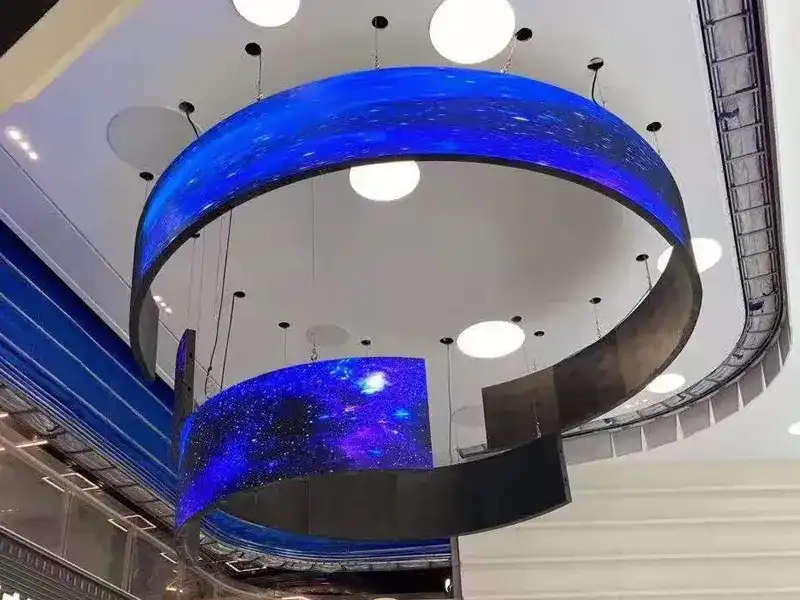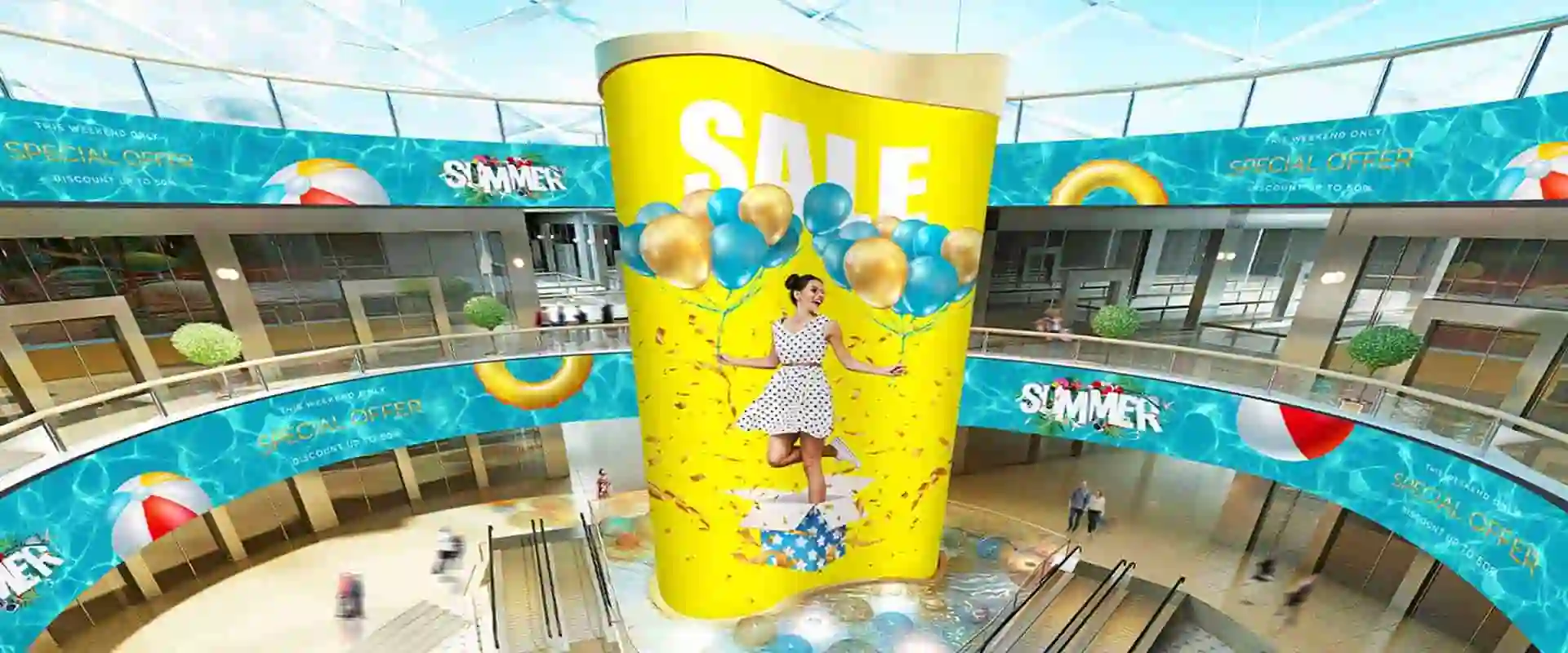Flexible LED screen VS flexible OLED screen: Which is Better?

With the advancements in display technology, flexible screens have revolutionized both commercial and creative industries. Flexible LED and OLED screens are two of the biggest names in this field.
Both allow your screens to bend and twist in amazing ways, but they're better suited for other purposes. You may be finishing up wrapping a stage, creating a storefront window display, or designing a foldable device. It's worth understanding which one best suits your needs.

What's a Flexible LED Screen?
Imagine having a bendable LED screen, like a magical billboard, that you can wrap around a pillar or bend around a wall. They consist of tiny LEDs embedded in soft, flexible circuit boards. Individual diodes emit a glow with high intensity and boldness and can be read even in the sunlight.
Since it's modular, you can add your installation module by module and swap out individual modules if one fails (without discarding the entire screen). That's why it's so prevalent in stadiums, outdoor billboards, mall window displays, and big event installations.
What is a Flexible OLED?
The flexible OLED display comes in the form of a foldable phone or a curved wearable screen. They utilize organic layers that emit light when an electric current passes through them. That is, each pixel illuminates independently, so there is no need for a backlight; as a result, the panel can be incredibly thin, incredibly lightweight, and foldable or flexible.
Great for little, personal applications such as phones, tablets, and curved specialty displays, Flexible OLEDs are not suited for building-scale or large-format applications.
Brightness & Outdoor Visibility
- ● Flexible LED screens have very high brightness levels, generally surpassing 10,000 nits, which means they remain visible and do not fade in direct sunlight exposure. Ideal for outdoor installations where nothing else can match.
- ● Flex OLED, however, is generally limited to 1000 nits or below. Great indoors or as a standalone device, but cannot match the brightness of LED if high light is needed.
When it comes to light and outdoor visibility, LED is the clear champion.
Blacks, Contrast, and Visual Depth
- ● OLED screens better generate authentic blacks since they can switch off individual pixels. That translates into rich, immersive contrast and deep color for video viewing on your phone or high-end screen-grabbing eyeballs.
- ● LED panels, while great at colorful output, use clusters of diodes and can't typically switch off individual pixels completely. So blacks may appear more like dark gray. However, modern LED screens still offer solid contrast, especially when scaled up to larger sizes.
If contrast and ideal black levels are necessary, OLED is your best option.
Durability & Lifespan
Here's where LED pulls ahead:
- ● Flexible Custom LED displays are constructed robustly. Rain or shine, they're weatherproof and shock-resistant. They should provide 80,000 to 100,000 hours of benefit with maintenance. And since they're modular, it's simple to replace a malfunctioning pixel or section.
- ● Flexible OLED displays are smart in comparison. They wear out after a short time, particularly when used in the presence of water. They are also prone to burn-in over time, especially with static content. Lifespan is between 30,000 and 50,000 hours.
For smart usage over extended periods and heat insulation during use, LED is the best option.
Design Freedom & Flexibility
- ● LED displays are very flexible. They may be bent enormously, wrapped around columns, or bent around corners; they're made for innovative, large-scale installations.
- ● OLED, being flexible, is suitable for slightly curved designs, such as those used in folding phones or delicate curves, but not for broad-format architectural wraps.
When it comes to large-scale design flexibility, LED again is the champion.
Cost & Scalability
- ● Flexible LED is very affordable on a large scale. You can start small and scale up by adding sections, creating larger displays, and replacing parts as needed. The total cost is cheaper per square metre for large installations.
- ● Flexible OLED is better suited for premium consumer goods. It costs too much to manufacture and does not make economic sense on a large scale. Replacing it when damaged can also be costly.
Where cost-effectiveness is required in scalability in business applications, the most intelligent choice is LED.
Use Case Comparison
Flexible LED screens are ideal where size, brightness, and strength are most important. They are suitable for retail in-store or outdoor displays as display signs, as well as in public spaces, such as event stages or backdrops.
On the other hand, flexible OLED screens are used for small, personal devices. They function well in smartphones, tablets, and wearable technology like smartwatches.
In short:
- ● Use flexible LED for outdoor advertisements, retail displays, stage backdrops, and curved or custom-built buildings.
- ● Flexible OLED technology is excellent for mobile devices and wearables, where compact size and high screen quality are vital.
Which One Should You Choose?
Here's the advice:
- ● If you need large-scale impact, weather resistance, long lifetime, and room-scale design, then Flexible LED screens are perfect.
- ● If you're building premium electronics, want top-tier black levels and contrast, and value portability or intimate viewing, then Flexible OLED is a great match.
At Cinstar LED, we specialize in flexible LED technology that scales reliably, from massive curved LED walls to wrap-around architectural installations. Our products are tailored for stage designers, event planners, retail designers, and public advertising people who need display power and flexibility in real-world environments.
Conclusion
Both flexible LED and flexible OLED have their advantages, but in situations where size, brightness, toughness, and affordability are key considerations, flexible LED screens offer greater value for your dollar.
No need to make a decision based on hype; make it based on where and how your display will be employed, and then spend time figuring out the details, such as pixel pitch, curve radius, and module sizes.
Contact Cinstar LED and let's create something remarkable together.
